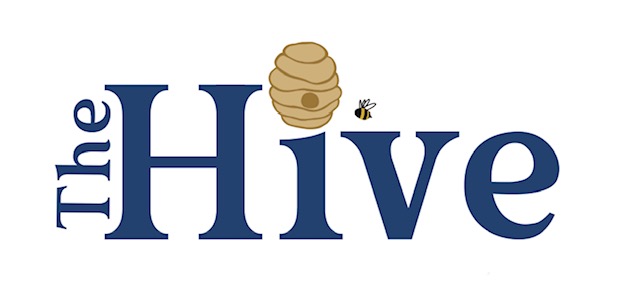On Monday, August 12th, an email was sent to all the EWSD staff, students, and parents about lead in the water. The email said that at Essex High School and the Center for Technology, five taps were found to have lead levels above the 4 PPB action level, prompting immediate removal from service to reduce lead exposure, which poses significant health and developmental risks, especially to children.
The Hive sat down with Garry Scott, Director of Facilities and District Safety for the Essex Westford School District, to discuss lead risks.

The Hive: What caused the lead in the kitchen water?
Garry Scott: We have a very clean water supply that comes into the building. If we had bad pipes everywhere, we would have hot tests everywhere. That means every tap in the building would come back with high lead concentrations. We don’t have that.
What we do have is a building that was built in [the] late 60s, early 70s, and the faucets that were built at the time– strictly the faucet, not the piping– have material of copper and different metals and filaments in there. When water sits for a period of time in those faucets, that can have the bleed over of any lead particles that are in those faucets.
What usually happens for lead water testing that is mandated by the state is you have to get a sample of water that has not been running, that has been sitting in the faucet. All the tests that we do means that the faucet hasn’t been used for eight hours. And then we turn it on and take that sample, and then we let it run, and then we do a second sample.
The first sample usually comes up with a high concentration, some areas where it does, and then the second one usually does not, because it flushes the whole system up. It’s the faucet itself. It’s not the pipes.
The Hive: How was this cause identified?
Garry Scott: We’re mandated by the state to do testing, and they give us a list of the taps that they want us to test. We follow the regulations to the Department of Health and the agency of natural resources and some of the information that I sent to you. The first round of testing happened back in 2020, and this is the second round of testing. We’re checking on different taps throughout the building so that’s how we get identified that way.
The Hive: When was the lead first found in the taps?
In 2020, the first state mandated us to do the testing. I also want to reiterate that none of the drinking faucets themselves, the water fountains, have tested positive in any way because they are newer, and the technology of those faucets are not the same type of filaments that are in, say, like a science classroom sink, because those are older. We don’t drink out of those, but you can wash your hands from them and stuff.
But the faucets that we drink out of throughout the building, the water fountains, are all safe, but so we’ve been testing Since 2020, and this is around testing that’s been mandated by the state.
The Hive: What immediate actions were taking once you found lead levels
Garry Scott: Once they come back, the results are tested by the state, they come back to us, and then we immediately take those units out of service, and one way or another by a sign. And in some cases, the recommendation is to replace the faucet and change that and see if that works, because there will be a second round of testing that will happen after that to see if the remediation effect has worked.
But for some faucets throughout the building, there will be a sign in place permanently saying, ‘Do not drink from this tap, but you can wash your hands, you can’t make coffee or something from that tap, and you can wash your paint brushes and things like that.’
The Hive: How many water sources had more than four parts per billion(PPB) of Lead?
Garry Scott: Here at the high school, five. And they were all not drinking sources, just washing hands, a classroom, the rink kitchen, the aqua lab sink, the rink dental sink, and a sink in another classroom. So they’re all classroom sinks.
The Hive: What steps have been taken to address the lead issue?
Garry Scott: If we can, we replace the faucets and put a new one in, or it’s a removal of service.
The Hive: Have these steps been proven effective?
Garry Scott: We have some cases in which we continue to see hot tests throughout the district, but not here at the high school. So other places, other buildings, like for example, Fleming, is a 150 year old, 120 year old building, so it’s more difficult to sort of chase those problems through that building. But here at the high school, everything has been effective so far, as far as removing them out of service.
The Hive: How is the issue communicated to this school?
Garry Scott: We sent an email that goes out when testing occurs and then when we get positive results as another email that is sent out to the entire district, or to the school district, school community related to those tests coming from the Superintendent’s office.
The Hive: What feedback or concerns were raised from that?
Garry Scott: Mostly it’s about, what is the contamination? What does this mean? What should I do? So a lot of it, we follow the Department of Health’s guidelines that if you have concerns, you contact your primary care physician. They can do testing and discuss with you what issues and what type of exposure they have.
But for the most part, we haven’t seen very high, high numbers in any of our taps, and we don’t see them in the long term. So we, as I explained, we do two tests, one from a tap that’s sat for eight hours, and then we let it flush, and then we do a second test.
Almost all of our second tests immediately come back below the amounts of four parts per billion. Those issues are usually like through the day, if you run a faucet, you’ll be well below the lead levels.
That’s a discussion you have with your primary care physician. From there, obviously no amount of lead is good, right? You can’t have lead in your system. That’s not healthy. So that’s the part you discuss with your physician.
And then there’s also other external factors outside of the school building, such as your home, lead paint in your house. Have you tested your own faucets? Do you have lead pipes in your house so there can be other areas of exposure outside of the building?
The Hive: What steps are being taken to prevent future contamination?
Garry Scott: We have a clean water supply that comes into the building.The Champlain Water District has won national awards for their clean water supply there. Back in May, there was a statewide grant given to Vermont for $28 million related to Vermont lead pipe replacements. In the district, we go through and take a look at the taps that we have, and when we have to test them, we replace them.
The Hive: Are there any new maintenance or monitoring procedures?
Garry Scott: We have new water fountains within the last 10 to 12 years throughout the district that we put on most of the buildings, so that’s the way they remove any type of metal filaments inside them that have water filtration devices.
The Hive: Why were the water fountains upstairs closed for a while?
Garry Scott: During the summer, we go through summer cleaning and restoration. There’s a lot of particles and things like that that go up there. We’re waxing the floors. A lot of work is being done to the ceilings so we don’t want to contaminate and make sure people aren’t falling into all the dusty and crappy stuff that falls from the ceilings.
Because it’s an off season, we do a lot of maintenance work. We were placing all these lights throughout the building so all that sediment falls in the sink, so then we shut them down so people aren’t drinking out because they’re just dirty, we don’t clean up, and there’s no one here and then when we get back to the start of school, we get back to cleaning the whole building and making sure those things can be open back up.












